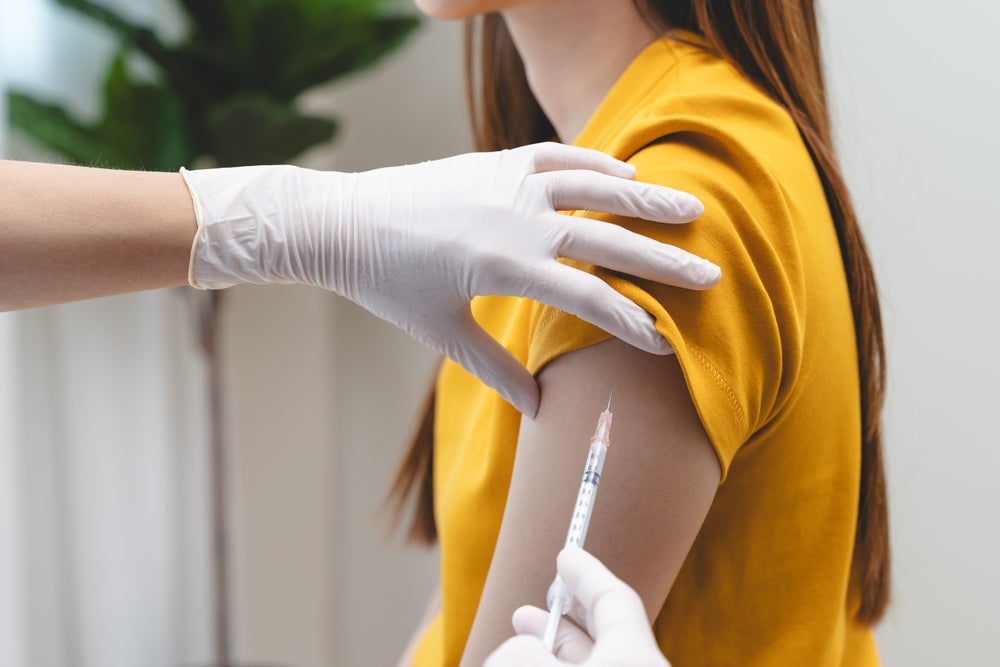TIGIT inhibitors have long been in a difficult race toward the finish line on the non-small cell lung cancer (NSCLC) track. At the European Society for Medical Oncology (ESMO) Congress 2024, GSK and iTeos finally provided the first data reveal of their TIGIT inhibitor, belrestotug, in combination with Jemperli (dostarlimab) in the first-line, PD-L1-high setting of NSCLC.
Dr. David R. Spigel presented the interim analysis on the Phase II, open-label, GALAXIES Lung-201 trial at an overall median follow-up of 7.3 months. At all three dose levels of belrestotug (100, 400, and 1000mg), belrestotug + dostarlimab demonstrated an almost doubled confirmed overall response rate (ORR) over dostarlimab monotherapy, with over 90% decrease in circulating tumour DNA (ctDNA) in higher dose levels. Although the data presented shed a positive light on the combination’s potential, the interim analysis did not provide any insights on key secondary survival and durability endpoints, and ultimately, on how the combination compares with the well-established stand of care, MSD’s Keytruda (pembrolizumab), in the comparator arm. The current analysis only included 124 patients at the data cut-off, which is less than half of the 300 enrolment pool, leading to a minimal data size (about 30 patients) in each intervention arm. Like its fellow TIGIT competitors, the published data is still too immature to prove the combination’s capability to disrupt the NSCLC treatment paradigm.
Belrestotug 400mg was selected as the recommended Phase III dose (RP3D) for the enrolling, registrational GALAXIES Lung-301 trial, which aims to compare belrestotug + Jemperli against Keytruda monotherapy in 1,000 patients worldwide. In the much smaller GALAXIES Lung-201 trial, working with only 32 patients in each arm in the analysis, the 400mg dose yielded a confirmed ORR of 59.4% versus Jemperli monotherapy’s 28.1%, none of which in both arms experienced a complete response.
As a numerical comparison, Keytruda monotherapy achieved a 45% ORR in first-line PD-L1 high patients in its KEYNOTE-024 trial. Both arms may yield a higher confirmed ORR at later analysis as Jemperli has demonstrated comparable efficacy to Keytruda in the head-to-head Phase II PERLA trial. Patients in the RP3D arm had a median 94% decrease in ctDNA, compared to a 65% decrease in the Jemperli arm suggesting the combination’s ability to yield a deeper response over a efficacious PD-1 option. On safety, belrestotug + Jemperli caused a noticeable increase in overall treatment-related adverse events (TRAEs) (84% versus 59%), treatment-related immune-related adverse events (TR-irAEs) (56% versus 19%), and discontinuation rate (16% versus 6%), in addition to a single Grade 5 case. While Grade 3 or above TR-irAE rates are similar (16% versus 13%) in the two arms, pruritus, rash, and immune-mediated lung disease were unique Grade 3+ events observed in the RP3D group of patients.
Dual inhibition of TIGIT and PD-(L)1 was considered the next most promising immune checkpoint blockade strategy to enhance anti-tumour immunity before high-profile flops from Roche’s tiragolumab + Tecentriq combination. According to GlobalData’s Pharmaceutical Intelligence Center, Roche, MSD, Arcus/Gilead, iTeos/GSK, Beigene, and AstraZeneca are in a pressured TIGIT race to reach the sizeable NSCLC patient population. Tiragolumab + Tecentriq is on a shaky foundation in the Phase III SKYSCRAPER-01 trial, where the combination showed a first-line OS of 22.9 months at a risky hazard ratio, ranging from 0.63 to 1.03. Arcus/Gilead is the only other developer to provide a more robust set of first-line evidence with domvanalimab + zimberelimab’s Phase II ARC-7 trial. Presented at the 2023 ASCO meeting, the preliminary data reported a lower confirmed ORR (41%) and a similar rate of Grade 3+ treatment-emergent adverse events (TEAEs, 47%) in PD-L1 high patients. Arcus/Gilead’s domvanalimab is attempting to differentiate itself by joining forces with AstraZeneca’s Imfinzi (durvalumab) to address an earlier stage of the patient journey, where stage IIIB-IIIC NSCLC patients would receive a ”consolidation” regimen after concurrent chemoradiation, a setting where Imfinzi dominates currently. The second line has been ruled out as a possibility for TIGIT as MSD’s vibostolimab + pembrolizumab has failed on OS improvement in the Phase II KeyVibe-002 study.
The market currently anticipates the belrestotug combination to reach $871m by the end of the decade, as revealed by GlobalData’s analyst consensus forecast. With higher immune-related toxicity, the TIGIT combination will have to deliver a convincing OS benefit to switch physicians’ prescribing habits from the existing PD-1 regimens and to build resiliency against emerging first-line threats from pipeline antibody-drug conjugates and bispecific antibodies.















